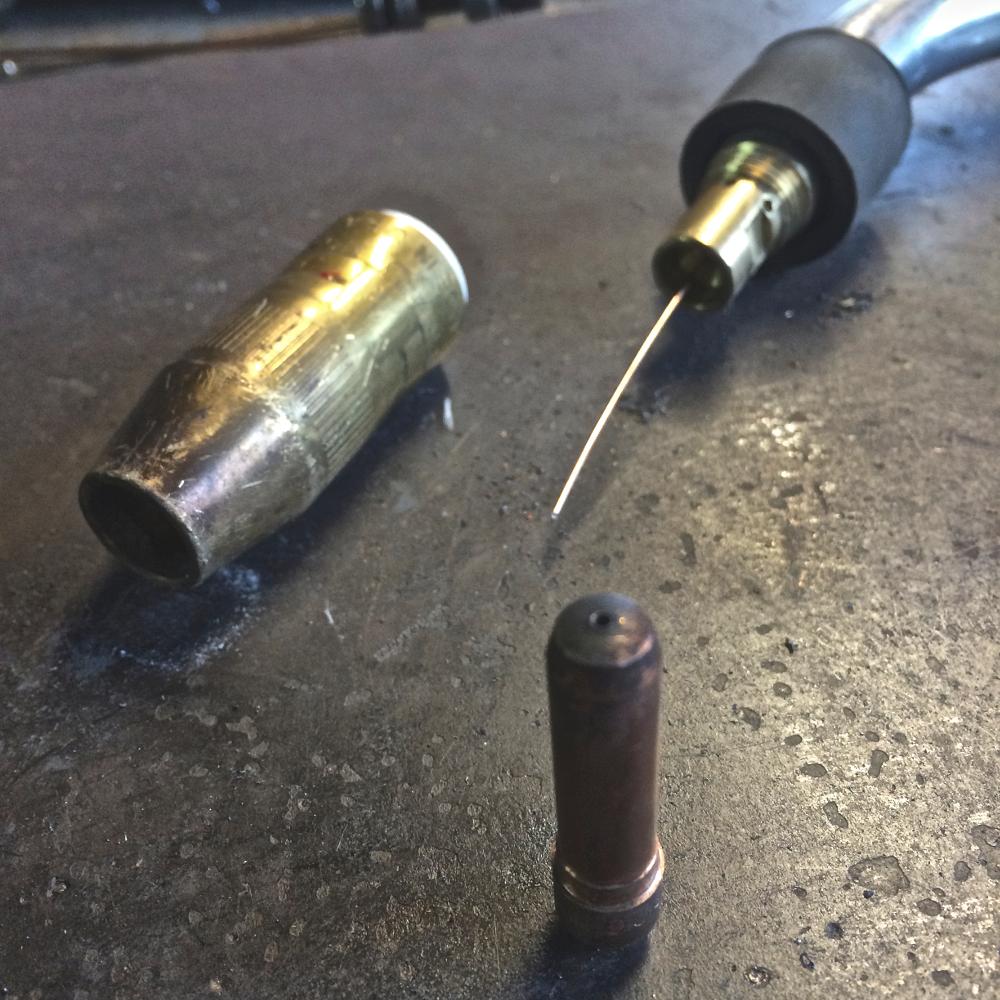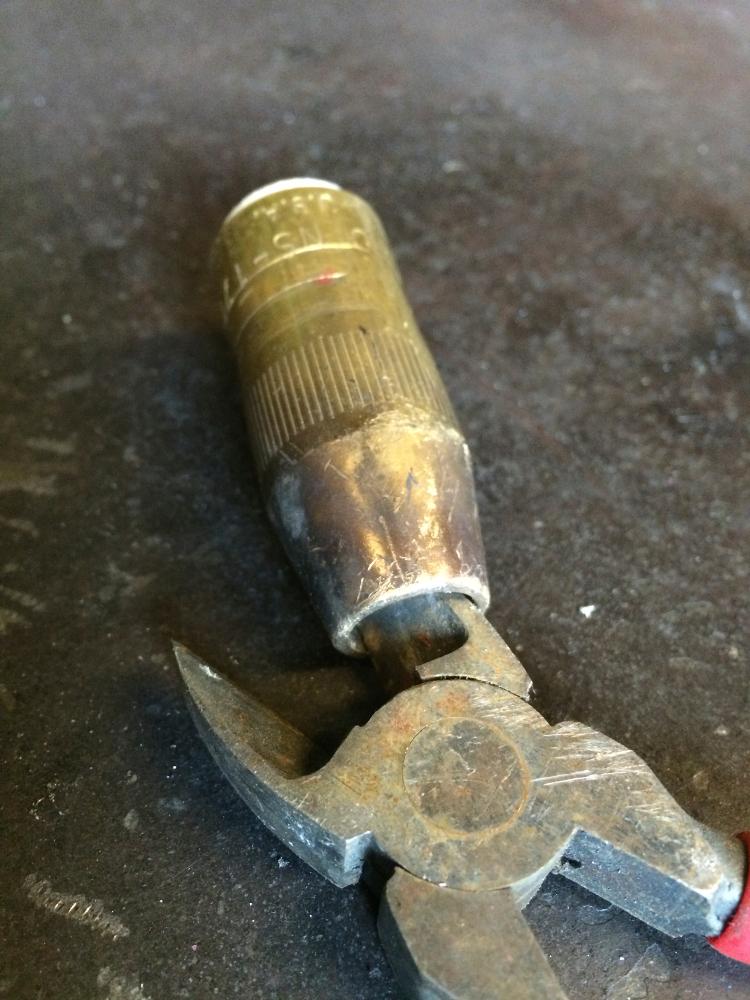Owner, Brown Dog Welding
- FMA
- The Fabricator
- FABTECH
- Canadian Metalworking
Categories
- Additive Manufacturing
- Aluminum Welding
- Arc Welding
- Assembly and Joining
- Automation and Robotics
- Bending and Forming
- Consumables
- Cutting and Weld Prep
- Electric Vehicles
- En Español
- Finishing
- Hydroforming
- Laser Cutting
- Laser Welding
- Machining
- Manufacturing Software
- Materials Handling
- Metals/Materials
- Oxyfuel Cutting
- Plasma Cutting
- Power Tools
- Punching and Other Holemaking
- Roll Forming
- Safety
- Sawing
- Shearing
- Shop Management
- Testing and Measuring
- Tube and Pipe Fabrication
- Tube and Pipe Production
- Waterjet Cutting
Industry Directory
Webcasts
Podcasts
FAB 40
Advertise
Subscribe
Account Login
Search
MIG welding troubleshooting tips
- By Josh Welton
- UPDATED January 25, 2023
- March 25, 2015
MIG welding machines often are used as a simple tool for basic welding needs, a relatively inexpensive must-have for every garage.
They certainly are handy to have around, but even with a “simple” tool, maintenance and troubleshooting knowledge can make the difference between wanting to throw a machine in the dumpster and keeping it running like a top.
A few years ago I was out in Arizona for work. During my downtime, I’d visit Tombstone and hang out with Grizz, the blacksmith in the O.K. Corral. He was an old-school blacksmith, but in his later years he mostly made little gifts and trinkets for the tourists.
Grizz’s son had set up a little 110 Millermatic to make attaching the branding irons to the handles quick and easy. Grizz was never into welding, so he just used it as a point and shoot machine, never messing with the settings. When he found out I was a welder, he asked me to look at it for him, as it wasn’t running right. It would spit and sputter when you pulled the trigger, creating lumpy welds full of porosity.
Where to Start MIG Welding Troubleshooting
The first thing to check is the gun’s nozzle. MIG-specific welding dikes (diagonal wire cutters) double as nozzle cleaners, but I usually clean the spatter off the end and inside of the barrel with regular wire cutters. Splatter can build up and arc out with the wire, and it can also break loose and fall into the weld puddle, contaminating it.
Once that’s taken care of, look at where the wire comes out, the contact tip. If it’s too worn, it may need to be replaced. Spatter also can collect here, and if it does it can arc out with the wire, which causes a sporadic feed. Sometimes it can clog up and stop the wire from feeding completely.
Most of the time you can clean the tip with the sharp edge of wire cutters. You also can remove it and take it to a wire wheel, or even give it a soft buzz with a disc sander.
In the case of Grizz’s machine, it was all of the above. The nozzle was nearly completely gunked up with spatter, as was the contact tip. These parts are cheap and easy to replace, and in all honesty that’s not a bad option. But if you don’t weld all that often and don’t carry spare parts, you can usually get them in working order by taking the steps mentioned previously.
Despite the parts being used and abused, I was able to clean them up enough for Grizz to use the machine again, and man, was he grateful.
A Few More Tips for MIG Welding
-
If the contact tip arcs shut, it’s possible that the wire will “birdnest” inside of the machine. If that happens, cut out the mess between the spool and the drive rolls. With the contact tip off, pull out the wire that’s left in the gun cable from the gun side. Then feed new wire through the rollers and into the gun, keeping the cable as straight as possible.
Do not try to feed kinked wire into the cable. If you get it back together, and the wire is still feeding rough, you may have to replace the liner.
- It never hurts to double-check your wire size. If you’re setting up thinking you’re running 0.030-inch wire but you’re running 0.045, it can cause headaches. I know it sounds simple, but I’ve seen it happen more than a few times.
- Check that the drive rollers are sized correctly for the wire you’re running, and make sure they aren’t too tight or too loose. They should be adjusted so that they are feeding the wire cleanly without slipping.
- I often take a pair of earplugs and run the wire through them between the spool and the drive rollers; they act like a cheap wire cleaner.
- If everything else is clean and you’re getting porosity, make sure the gas diffuser isn’t clogged or covered up.
- If you’re running at a high wire speed, it might not hurt to use a contact tip that’s a bit oversized. I do a lot of pulse-on-pulse MIG, where the feed rate might be more than 400 inches per minute. If I’m running 0.045-in. wire, a 0.052 contact tip often runs smoother.
But go through the simple stuff first. Clean consumables (nozzle and contact tip) are the key to good MIG welds, and most of the time your troubleshooting will start and finish there.
subscribe now

The Welder, formerly known as Practical Welding Today, is a showcase of the real people who make the products we use and work with every day. This magazine has served the welding community in North America well for more than 20 years.
start your free subscriptionAbout the Author

About the Publication
- Stay connected from anywhere

Easily access valuable industry resources now with full access to the digital edition of The Fabricator.

Easily access valuable industry resources now with full access to the digital edition of The Welder.

Easily access valuable industry resources now with full access to the digital edition of The Tube and Pipe Journal.
- Podcasting
- Podcast:
- The Fabricator Podcast
- Published:
- 04/16/2024
- Running Time:
- 63:29
In this episode of The Fabricator Podcast, Caleb Chamberlain, co-founder and CEO of OSH Cut, discusses his company’s...
- Industry Events
16th Annual Safety Conference
- April 30 - May 1, 2024
- Elgin,
Pipe and Tube Conference
- May 21 - 22, 2024
- Omaha, NE
World-Class Roll Forming Workshop
- June 5 - 6, 2024
- Louisville, KY
Advanced Laser Application Workshop
- June 25 - 27, 2024
- Novi, MI


































